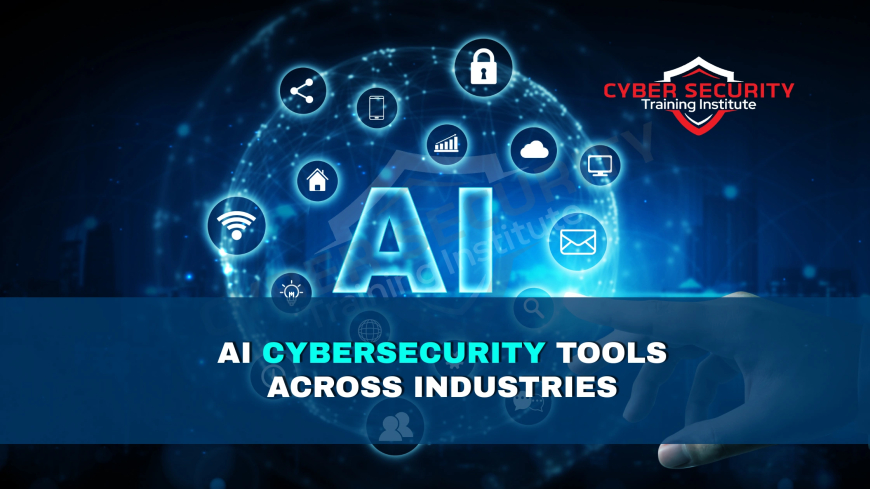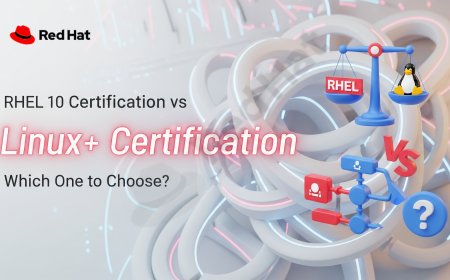What Industries Benefit the Most From AI Cybersecurity Tools Like Cylance?
In today’s digital age, cyberattacks are a constant threat, targeting businesses with increasingly sophisticated methods like ransomware, phishing, and data breaches. Traditional cybersecurity tools often struggle to keep up, especially against new, unknown threats. AI-powered solutions like Cylance are changing the game by using machine learning to predict and prevent attacks in real time. But which industries stand to gain the most from these advanced tools? This blog explores how Cylance and similar AI cybersecurity platforms protect key sectors, ensuring data security, operational continuity, and customer trust in a connected world.

Table of Contents
- The Growing Need for AI Cybersecurity
- What is Cylance?
- How Cylance Protects Businesses
- Industries Benefiting Most from Cylance
- Benefits of AI Cybersecurity Tools
- Challenges in Adoption
- Complementary Security Measures
- Real-World Examples
- The Future of AI Cybersecurity Across Industries
- Conclusion
- Frequently Asked Questions
The Growing Need for AI Cybersecurity
Cyber threats have evolved beyond simple viruses, with attackers using advanced techniques like zero-day exploits and targeted ransomware. Businesses across industries face risks such as data theft, financial losses, and operational downtime. Traditional antivirus software, reliant on known threat signatures, often fails to detect new attacks, leaving organizations vulnerable. AI cybersecurity tools like Cylance address this gap by predicting and blocking threats proactively, making them essential for industries handling sensitive data or critical operations.
Common cyber threats include:
- Ransomware: Locks data, demanding payment to restore access.
- Phishing: Fake emails trick users into sharing credentials or downloading malware.
- Data Breaches: Hackers access sensitive information, risking privacy and compliance.
- Malware: Malicious software disrupts systems or steals data.
These threats, noted in recent X discussions, highlight the need for AI-driven solutions in high-risk industries.
What is Cylance?
Cylance is an AI-powered cybersecurity platform that uses machine learning to prevent cyber threats. Unlike traditional antivirus tools, Cylance doesn’t rely on signature databases. Instead, it analyzes file behavior to predict and block malware, even if it’s never been seen before. Its lightweight design and cloud-based management make it ideal for businesses with diverse devices and limited IT resources.
Cylance’s key features include:
- Proactive threat prevention using AI.
- Minimal system impact for efficient performance.
- Cloud-based dashboards for easy monitoring.
- Scalability for large, complex networks.
These capabilities make Cylance a top choice for industries facing high cyber risks.
How Cylance Protects Businesses
Cylance uses artificial intelligence to analyze files before they run, assigning a “threat score” based on their behavior. If a file appears malicious, Cylance blocks it instantly, preventing damage. It also monitors devices and networks for suspicious activity, providing real-time protection across an organization’s digital environment. This predictive approach is particularly valuable for industries with sensitive data or critical operations.
Cylance’s process includes:
- Predictive Analysis: Identifies potential threats without relying on known signatures.
- Real-Time Blocking: Stops malware before it executes.
- Low Resource Use: Runs efficiently on devices, even older ones.
- Cloud Management: Allows IT teams to monitor threats remotely.
This makes Cylance a powerful tool for industries needing robust cybersecurity.
Industries Benefiting Most from Cylance
Several industries benefit significantly from AI cybersecurity tools like Cylance due to their unique needs and risks. The following table highlights key sectors and their benefits:
| Industry | Key Risks | Cylance Benefits |
|---|---|---|
| Healthcare | Patient data breaches, ransomware disrupting care. | Protects sensitive data, ensures HIPAA compliance. |
| Finance | Financial fraud, phishing, data theft. | Blocks zero-day attacks, secures transactions. |
| Education | Student data leaks, ransomware disrupting classes. | Safeguards records, supports FERPA compliance. |
| Retail | Customer data theft, payment system attacks. | Protects payment systems, prevents breaches. |
| Government | National security risks, insider threats. | Detects insider threats, secures critical systems. |
These industries leverage Cylance’s AI to address their specific cybersecurity challenges.
Benefits of AI Cybersecurity Tools
Cylance and similar AI tools offer significant advantages across industries:
- Proactive Defense: Stops unknown threats before they cause harm.
- Efficiency: Reduces IT workload with minimal updates and automation.
- Scalability: Protects large networks with thousands of devices.
- Cost Savings: Prevents costly breaches and recovery efforts.
- Compliance Support: Helps meet industry regulations like HIPAA or GDPR.
These benefits make AI tools like Cylance essential for high-risk sectors.
Challenges in Adoption
While powerful, AI cybersecurity tools face adoption challenges:
- Cost: Licensing fees can be high for smaller organizations.
- Technical Expertise: Requires skilled staff for setup and management.
- Integration: Aligning with existing systems can be complex.
- False Positives: AI may flag legitimate files, needing human review.
- Privacy Concerns: Data monitoring must comply with privacy laws.
Businesses must address these challenges to maximize Cylance’s effectiveness.
Complementary Security Measures
Cylance works best alongside other defenses to create a robust security strategy:
- Employee Training: Educate staff on avoiding phishing and securing data.
- Multi-Factor Authentication (MFA): Add extra verification to prevent unauthorized access.
- Regular Backups: Store data offline to recover from attacks without loss.
- Firewalls: Block malicious traffic to protect networks.
- Software Updates: Patch systems to close vulnerabilities.
These measures enhance Cylance’s ability to safeguard industries from cyber threats.
Real-World Examples
Cylance has proven effective across industries, as noted in recent cybersecurity discussions:
- A healthcare provider used Cylance to block a ransomware attack, protecting patient records.
- A financial firm stopped a zero-day malware attack, securing customer transactions.
- A university prevented a data breach, safeguarding student information with Cylance’s AI.
These success stories, shared on platforms like X, highlight Cylance’s impact in high-risk sectors.
The Future of AI Cybersecurity Across Industries
As cyber threats evolve, AI tools like Cylance will play a larger role:
- Advanced AI: More precise algorithms to detect complex threats.
- IoT Security: Protecting connected devices, like smart healthcare or retail systems.
- Automated Recovery: AI-driven restoration of systems post-attack.
- Zero Trust Models: Verifying every user and device for enhanced security.
Cylance’s AI foundation ensures it remains a leader in protecting industries from future threats.
Conclusion
AI cybersecurity tools like Cylance are transforming how industries protect themselves from cyber threats. By predicting and blocking attacks in real time, Cylance offers a proactive defense that traditional tools can’t match. Industries like healthcare, finance, education, retail, and government benefit most due to their sensitive data and high-risk environments. While challenges like cost and integration exist, combining Cylance with employee training, MFA, and backups creates a comprehensive security strategy. As cyberattacks grow more sophisticated, AI tools like Cylance will be critical for industries to safeguard their data, operations, and reputation in a digital world.
Frequently Asked Questions
What is Cylance?
Cylance is an AI-powered cybersecurity platform that predicts and blocks threats like malware.
Why do industries need AI cybersecurity?
They face advanced threats like ransomware and phishing that traditional tools struggle to stop.
How does Cylance differ from traditional antivirus?
It uses AI to predict threats, not signatures, catching unknown attacks.
Which industries benefit most from Cylance?
Healthcare, finance, education, retail, and government due to their sensitive data.
What is ransomware?
It’s malware that locks data, demanding payment to restore access.
Can Cylance stop zero-day attacks?
Yes, its AI predicts and blocks new, unknown threats.
Is Cylance expensive for businesses?
It can be costly, but cloud options make it accessible for many.
How does Cylance protect sensitive data?
It blocks malware and unauthorized access, ensuring compliance with laws like HIPAA.
What is a data breach?
It’s when hackers access sensitive information, risking privacy and compliance.
Does Cylance slow down devices?
No, its lightweight design ensures minimal performance impact.
How does Cylance help IT teams?
It automates threat detection and provides cloud-based management.
What is multi-factor authentication (MFA)?
MFA requires multiple verification steps to secure logins.
Can employee training reduce cyber risks?
Yes, training on phishing and data handling lowers attack risks.
What is a zero-day attack?
It’s a new, unknown threat that traditional antivirus can’t detect.
How fast does Cylance respond to threats?
It blocks threats in real time, preventing damage.
Can Cylance support large networks?
Yes, it scales to protect thousands of devices across industries.
What are false positives in cybersecurity?
They’re when legitimate files are flagged as threats, needing review.
Can Cylance help with compliance?
Yes, it supports regulations like GDPR, HIPAA, and FERPA.
What is phishing?
It’s a scam where attackers trick users into sharing credentials or downloading malware.
How will AI cybersecurity evolve?
It will include advanced AI, IoT security, and automated recovery systems.
What's Your Reaction?
 Like
0
Like
0
 Dislike
0
Dislike
0
 Love
0
Love
0
 Funny
0
Funny
0
 Angry
0
Angry
0
 Sad
0
Sad
0
 Wow
0
Wow
0














